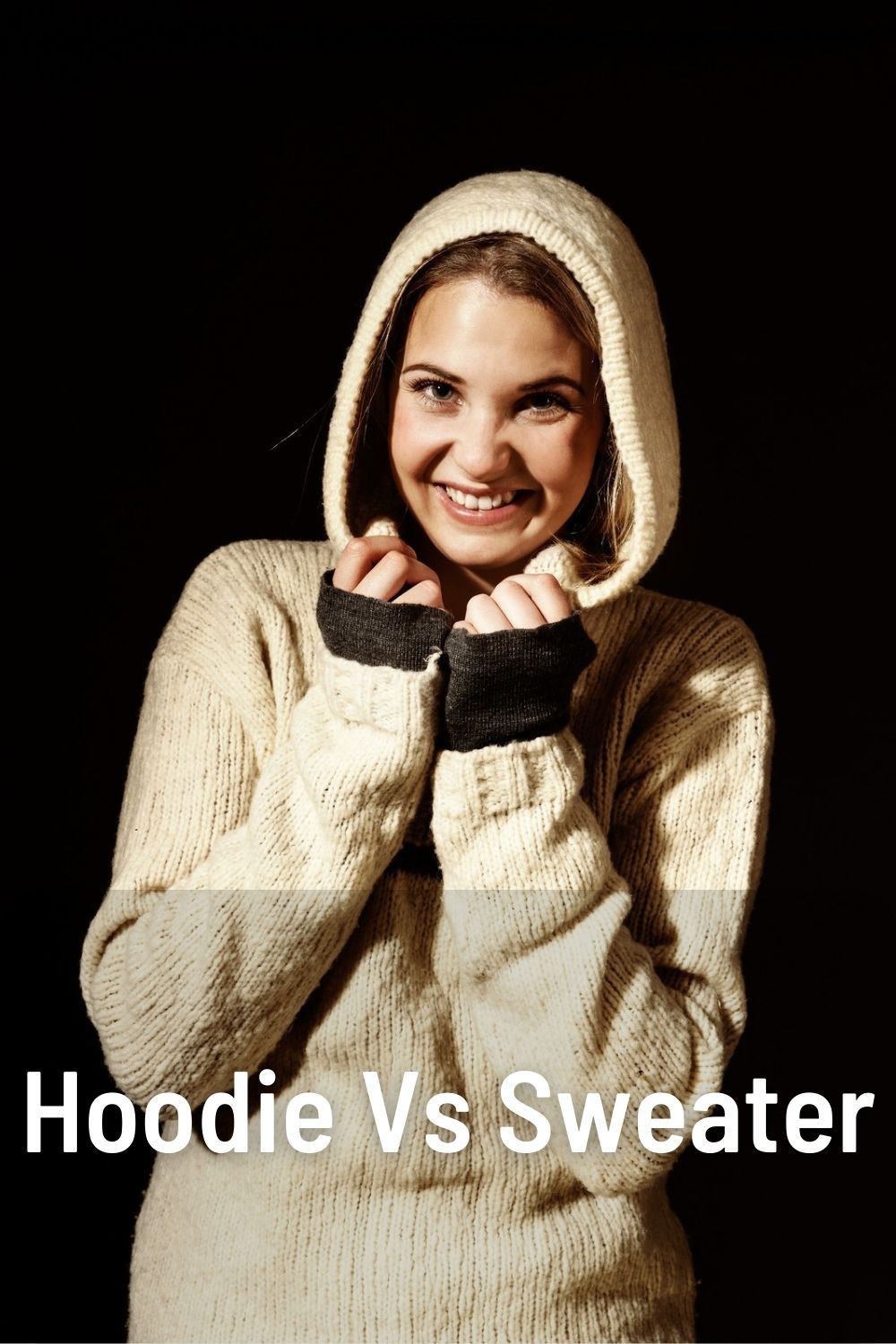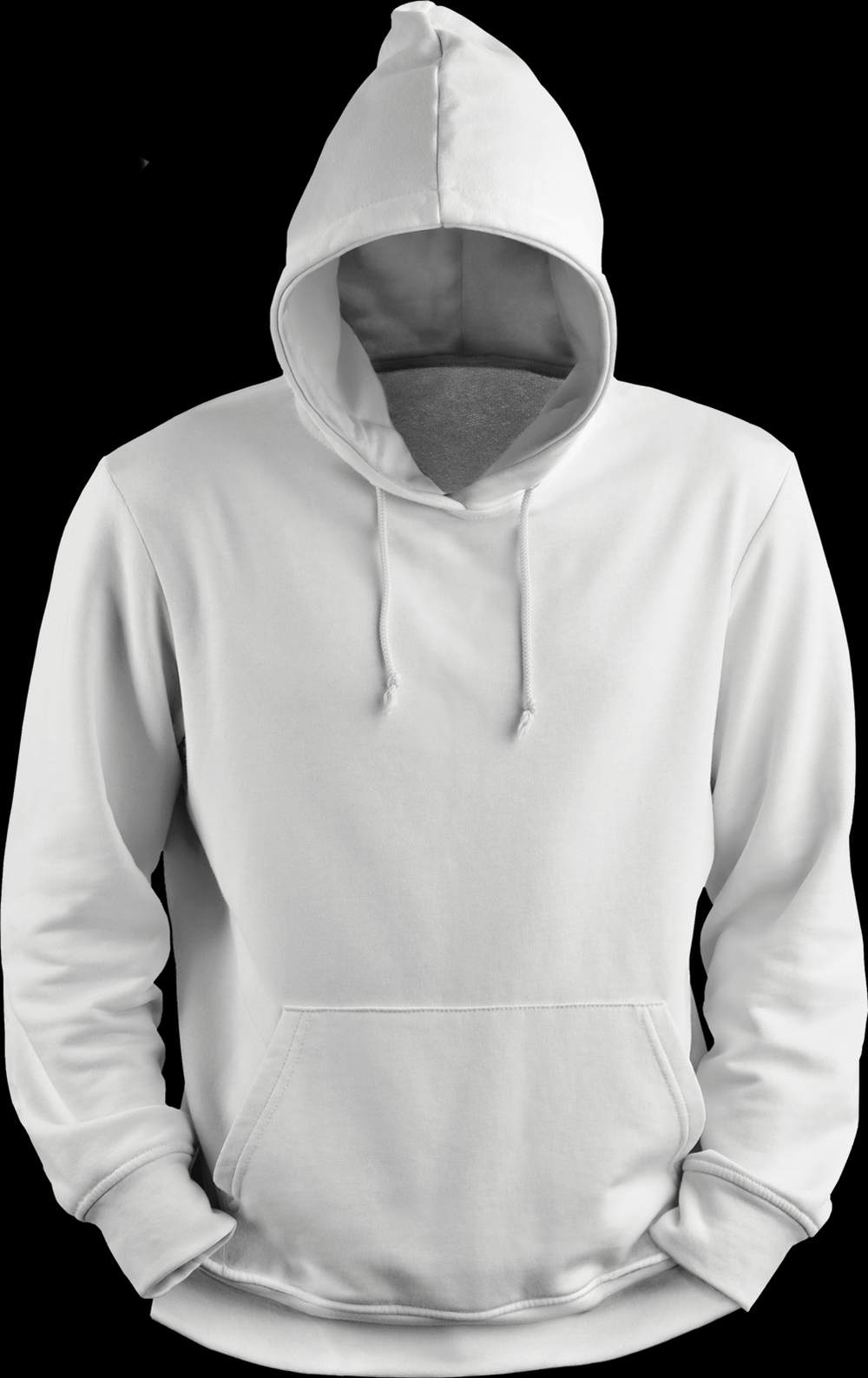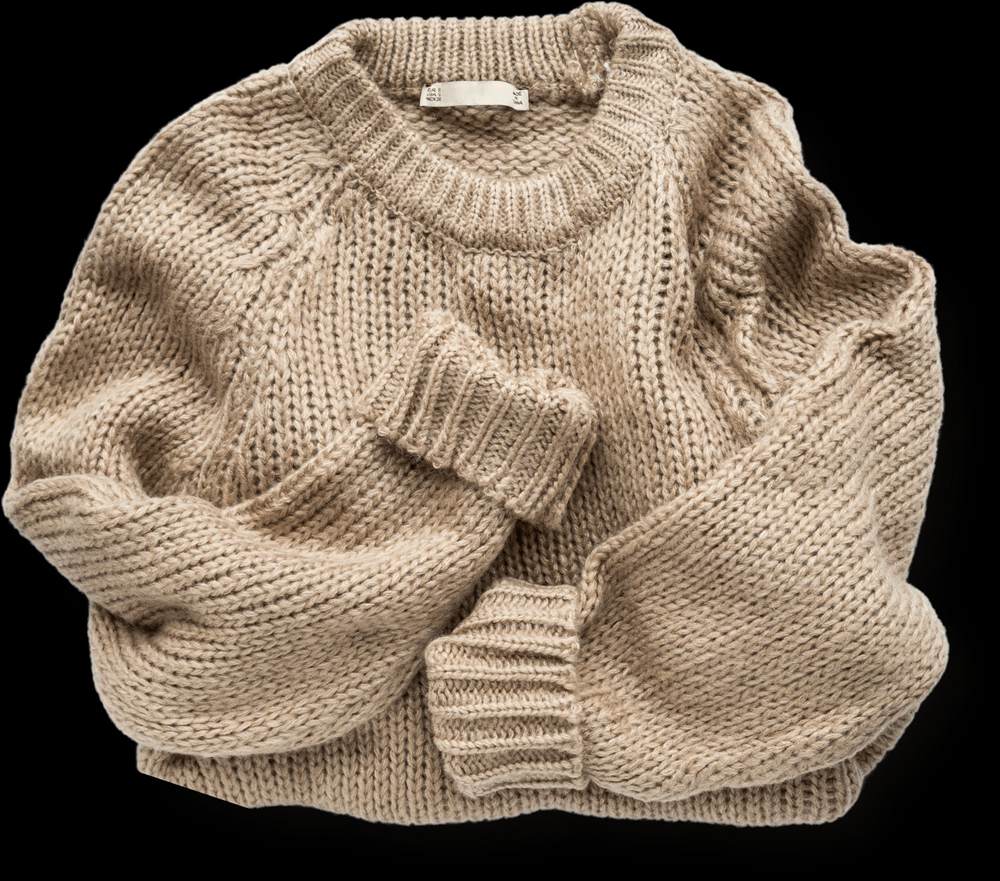
Hoodies and sweaters are both popular casual clothing items, but what exactly sets them apart? While they may seem quite similar at first glance, there are some notable differences between hoodies and sweaters in terms of design, fabric, fit, and intended use. Gaining a clear understanding of the distinctions can help ensure you select the right piece for your needs and style preferences.
Table of Contents
Hoodie Design and Features

A hoodie, also sometimes called a hooded sweatshirt, is a pullover sweatshirt with an integrated hood. The hoodie design features a hood sewn onto the back of the garment that can be pulled up over the head for warmth and protection from the elements. In addition to the signature hood, common attributes of the hoodie include:
- Pullover design – Hoodies do not have a full front zipper or buttons. Instead, you put a hoodie on by pulling it over your head. Some hoodies may feature a partial zip in the front neck for adjusting fit.
- Drawstring ties – Most hoodies have drawstrings at the neck opening to allow you to adjust the hood tightness around your face. Drawstrings with metal or plastic aglets on the ends can be pulled to cinch the hood.
- Front kangaroo pocket – Many hoodies have a large, kangaroo-style pocket on the front for warming hands or storing small items. The pouch pocket typically does not have a closure.
- Ribbed cuffs and hem – The cuffs at the wrist and bottom hem commonly feature elasticized ribbing to help the hoodie retain its shape and provide a snug fit.
- Sweatshirt fabric – Hoodies are made from soft, casual sweatshirt fabric like jersey, fleece, or terry cloth. The fabrics are thick enough to provide warmth and absorbency.
- Casual fit – Hoodies have an loose, casual fit designed for comfort and flexibility rather than form-fitting shaping. They run a bit larger in size to accommodate layered wear.
Sweater Styles and Attributes

In contrast to the sporty hoodie, sweaters cover a broader range of knit tops. Some key attributes that distinguish the various sweater styles include:
- Varied necklines – Unlike the hooded design of a hoodie, sweaters may have a turtleneck, V-neck, crew neck, polo neck, scoop neck, or other neckline styles. Collars are frequently included.
- Front opening – Many sweaters have a full front button or zipper opening for easy on/off. Some pullover designs mimic hoodies.
- No hood – Sweaters do not have an integrated hood. However, a hood can be layered underneath or over a sweater.
- Diverse materials – Sweaters are made from knit materials like wool, cashmere, cotton, synthetic fibers, or blends. The material affects the warmth and texture.
- Form-fitting shape – Sweaters are designed for a close, contoured fit through the torso, arms, and shoulders rather than the roomy looseness of a hoodie.
- Varied lengths – Sweaters come in lengths like cropped, hip-length, tunic, or oversized. Hoodies typically fall near hip-length or longer.
- Decorative details – Sweaters may integrate cable knit patterns, argyle motifs, embroidered accents, leather elbow patches, shoulder pads, and other decorative details.
With this broad range of styles – including pullovers, cardigans, turtlenecks, crew necks, v-necks, polo sweaters, crop sweaters, and more – sweaters can be tailored for work, play, and dressy occasions beyond casual wear.
Fabric Differences
The fabric choice plays a key role in the distinct characteristics of hoodies versus sweaters. There are some major differences between sweatshirt fabric and knits used for sweaters that affect the feel, structure, breathability, and durability:
Hoodie Fabrics
- Jersey – Lightweight, stretchy jersey has a soft, smooth face and a fleecy reverse side. It’s breathable and moisture-wicking.
- Fleece – Napped fleece has a soft, fuzzy handfeel and great insulation. It’s lightweight but very warm.
- Terry cloth – Absorbent terry cloth has loops that provide exceptional softness and moisture absorption.
- French terry – With a knit face and fleece reverse, french terry provides warmth without excessive bulk.
- Polyester – Durable, quick-drying polyester resists shrinking and fading. It’s often blended with cotton.
Sweater Knits
- Wool – Premium wool offers great warmth, breathability, and durability. Merino wool is exceptionally soft.
- Cashmere – Ultra-soft, fine cashmere provides lightweight warmth and resistance to pilling. It’s luxurious but delicate.
- Cotton – Natural, breathable cotton is smooth, comfortable, and machine-washable. Pima or Egyptian cottons are higher-quality.
- Acrylic – Acrylic mimics wool’s appearance and texture but is machine-washable. It pills easily.
- Nylon – Added to other fibers, nylon boosts durability and stretch. But pure nylon sweaters can feel stiff.
- Synthetic blends – Blended synthetic yarns make sweaters more affordable, wrinkle-resistant, and easy to care for.
Fit and Sizing
Hoodies and sweaters also differ quite a bit in terms of intended fit and sizing:
- Hoodies have an oversized, baggy shape for casual lounging comfort. They are roomy through the body, arms, and shoulders without being contour-hugging.
- Sweaters are designed for a close fit that flatters the torso, shoulders, and arm shape. Even looser sweater fits are more tailored than a hoodie.
- Hoodies run at least a size large to accommodate layered wear. For example, a medium hoodie would fit someone who normally wears a small.
- Sweaters are fitted to your actual size and garment dimensions. A women’s medium sweater fits someone who typically wears a size medium.
- Unisex sizing is common with hoodies, while sweaters are more likely to be sold in men’s and women’s specific sizes.
- Hoodies have ribbed cuffs and hems that hug more loosely around the wrists and waist.
- Sweaters may rely on the inherent stretch of the knit itself for a snug fit rather than elasticized ribbing.
Warmth and Breathability
There are also some notable performance differences between these knit garment types when it comes to warmth and breathability:
- Hoodies excel at providing casual comfort and warmth during cool weather. The hood offers additional protection.
- Sweaters run the gamut from ultra-light designs worn indoors to chunky knits for winter weather. Choose the right one for your needs.
- Fleece and terry hoodie fabrics have excellent insulation that traps body heat effectively. They are very warm given their lighter weight.
- The natural fibers used in sweaters like wool and cashmere offer temperature-regulating qualities superior to synthetic hoodie fabrics.
- Hoodie fabrics absorb moisture from sweat while allowing ventilation to evaporate dampness. This makes them fairly breathable.
- The structure of knit sweaters can either maximize air circulation and cooling or trap warmth based on the stitch patterns.
- Hoodies are optimized for performing physical activity or outdoor use where you want freedom of movement along with warmth.
- Many sweaters are designed more for fashion purposes rather than athletic performance or outdoor recreation.
Usage and Occasions
Hoodies and sweaters target different uses and social contexts:
- Hoodies are designed for casual, relaxed situations like lounging at home, running errands, walking the dog, and low-key social gatherings.
- Sweaters serve a broader range of uses including work in a business casual office, going out to dinner, holiday parties, and dressing up.
- A hoodie signals a casual, sporty vibe even when layered under a blazer or leather jacket.
- Sweaters can range from casual to dressy depending on the style. Argyle sweaters skew more formal.
- Hoodies commonly serve as outerwear for activities like hiking, camping, jogging, or walking the dog on a brisk day.
- Light sweaters may require an outer coat on top for cold-weather excursions while chunky knits can suffice as outerwear.
- Hoodies often feature large front pocket designs ideal for storing your phone, wallet, snacks, or other gear you need when on the go.
- Sweaters tend to have smaller, more discreet pockets suitable for concealing keys or cards rather than bulky items.
Care and Washing
Proper care is important for maximizing the longevity and appearance retention of any knit top. Follow these general guidelines:
- Hoodies – Most are machine washable and dryable. Use gentle/cold settings to avoid shrinking, and avoid fabric softener.
- Sweaters – Those made from 100% wool, cashmere, silk, or other delicate fabrics require hand washing or dry cleaning. Read the label.
- Limit washing when possible to avoid pilling and fading. Spot treat minor stains on sweaters and hoodies instead.
- Hang dry or lay hoodies and sweaters flat to dry. High heat can damage the fabrics. Use low heat if needed.
- Steam or re-block sweaters after washing to reshape and smooth the knit fabric structure. Avoid over-drying sweaters.
- Use a sweater comb to gently remove pills and refresh the surface appearance between washes.
Key Takeaways
While hoodies and sweaters have some overlap in being knit garments, there are many differences between them:
- Hoodies are casual, sporty pullover tops with an integrated hood, kangaroo pocket, and drawstrings. Sweaters encompass various styles from form-fitting to oversized made from knit fabrics.
- Hoodie fabrics like fleece, terry, and jersey maximize softness, absorbency, and breathability. Premium natural fibers like wool and cashmere are often used in sweaters.
- The oversized, relaxed fit of a hoodie contrasts the contoured, close fit associated with sweaters for shaping the torso and arms.
- Hoodies dominate for applications like lounging, outdoor recreation, and casual activities. The diversity of sweater styles suits both laidback and more formal occasions.
- When washing, hoodies can usually be machine dried on low while many sweaters require reshaping or professional cleaning.
By understanding these differences in terms of design, construction, materials, fit, and care, you can confidently choose either a cozy hoodie or stylish sweater when building your cold-weather wardrobe.
Frequently Asked Questions
What’s warmer, a hoodie or sweater?
Sweaters made from natural fibers like wool or cashmere are generally warmer than a cotton hoodie of the same thickness. The structure of knitted sweaters traps air to retain heat. High-quality wools also wick moisture better than cotton. But a thick fleece or sherpa hoodie can be just as insulating as a fine wool sweater.
Can you wear a hoodie to work?
In a business casual workplace, you may be able to wear a basic hoodie with dark jeans and leather shoes. For a professional office setting, a hoodie would likely be seen as too casual unless covered by a sports coat or blazer. The hoodie style and graphic designs should also be tasteful and subtle for the workplace.
Are sweaters business casual?
Many sweaters work well for business casual offices, depending on the style. Fine knit sweaters, cashmere sweaters, cardigans, tucked-in sweaters, and sweater sets paired with collared shirts and slacks would all be appropriate business casual sweater options for both men and women.
Can you wear a hoodie with a shirt?
Layering a collared shirt or button-down under an open hoodie is a great way to dress up the hoodie for going out while still staying comfortable and casual. Pair the layered hoodie look with dark jeans or chinos. Just avoid overstuffing the sleeves under a tight hoodie fit.
Should guys wear sweaters?
Sweaters offer guys an attractive wardrobe option to pair with dress trousers or jeans for both casual and formal occasions. Crew neck, v-neck, turtleneck, cardigan, and cable knit sweaters in neutral colors or simple patterns can work well for men and showcase their personal style.